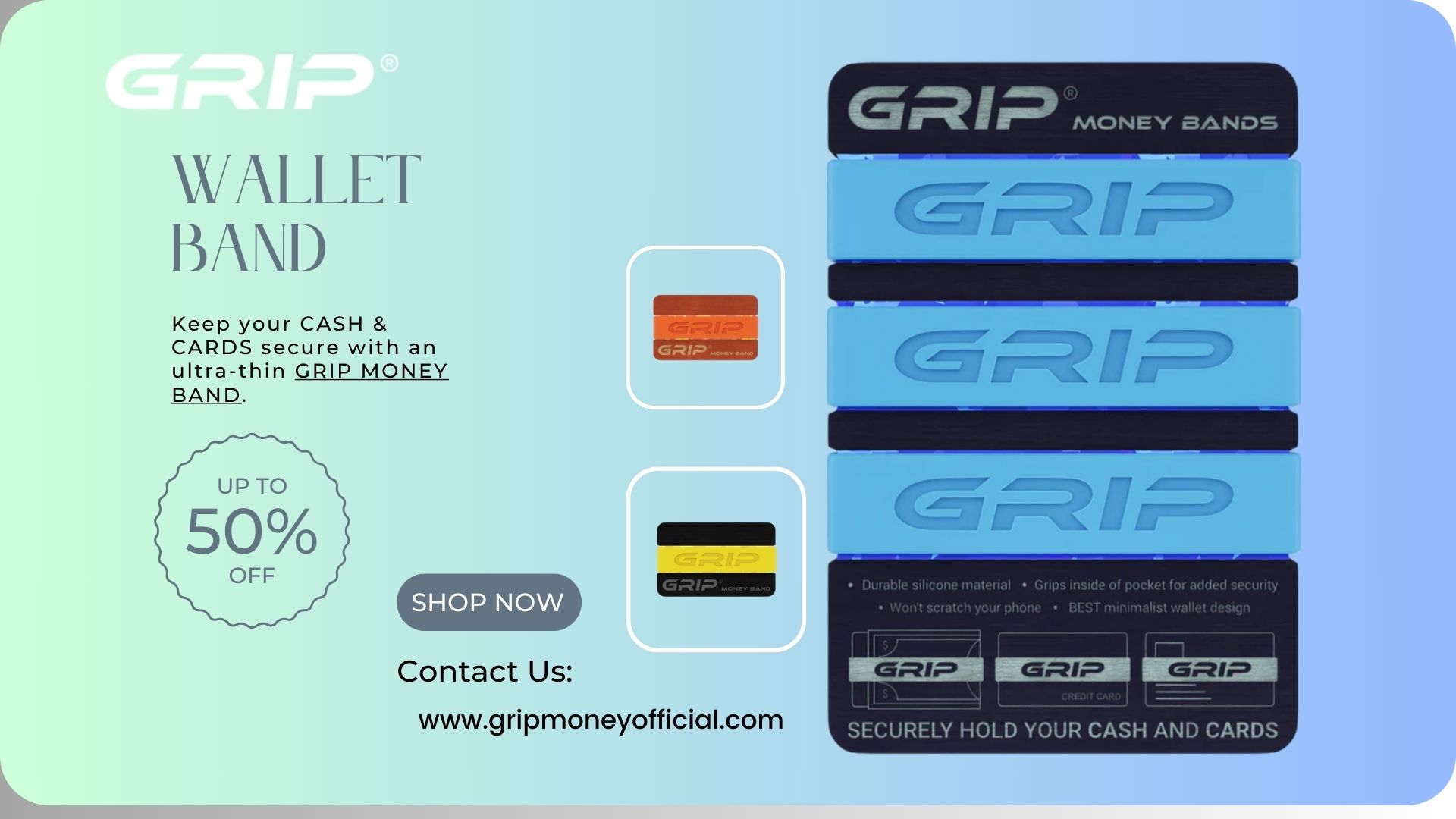Money bands are simple yet essential tools used in various industries for organizing and securing cash. Whether you’re a business owner, cashier, or individual managing your finances, understanding money bands can help streamline your operations and protect your money. In this article, we’ll delve into everything you need to know about money bands, from their history and types to their benefits and future trends.
Introduction to Money Bands:
Money bands, also known as currency straps or bill straps, are elastic or paper bands used to hold and organize stacks of cash securely. They serve as an alternative to rubber bands or clips and are designed specifically for currency handling purposes.
History of Money Bands:
The use of money bands dates back several decades, originating from the need for a convenient and secure way to bundle cash. Initially made from simple materials like rubber or paper, money bands have evolved significantly over time to meet the demands of modern businesses and financial institutions.
Origins:
The exact origins of money bands are unclear, but they likely emerged alongside the widespread use of paper currency. Early versions may have been handmade by individuals or businesses seeking to simplify cash handling procedures.
Evolution over time:
As the demand for efficient cash management solutions grew, manufacturers began producing standardized money bands in various sizes and materials. Today, money bands are available in a wide range of options to suit different currencies and preferences.
Types of Money Band:
Money bands come in various types, each offering unique features and benefits tailored to specific needs.
Rubber bands:
Rubber bands are the most common type of money bands, known for their flexibility and durability. They are often used for temporary bundling of cash but may deteriorate over time with frequent use.
Paper bands:
Paper bands, also called currency straps, are made from sturdy paper material and feature pre-printed denomination markings. They offer a more secure and professional way to bundle cash and are commonly used in banks and financial institutions.
Customized bands:
Some businesses opt for customized money bands featuring their logo or branding for added security and promotional purposes. These bands can be tailored to specific size and design requirements, offering a personalized touch to cash handling procedures.
Benefits of Using Money Bands:
The use of money bands offers several benefits for businesses and individuals alike, including:
- Organization: Money bands help keep cash neatly sorted and easily accessible, reducing the risk of errors or miscounts.
- Security: By securely bundling cash, money bands deter theft and unauthorized access, providing peace of mind for businesses and their employees.
- Branding: Customized money bands can serve as a subtle yet effective branding tool, reinforcing brand identity and promoting professionalism.
How to Use Money Bands Effectively:
To maximize the benefits of money bands, it’s essential to use them correctly and efficiently.
Sorting and bundling cash:
When bundling cash, ensure that bills are aligned and flat to prevent uneven stacking. Use appropriate-sized money bands to hold each stack securely without overstretching or damaging the bands.
Identifying denominations:
Paper bands with pre-printed denomination markings can help quickly identify the value of each cash bundle, streamlining cash handling processes and reducing the likelihood of errors.
Factors affecting pricing:
Rubber bands are generally more affordable than paper bands, but they may need frequent replacement due to wear and tear. Paper bands, while slightly more expensive, offer greater durability and security, making them a cost-effective long-term solution.
Bulk discounts:
Many suppliers offer discounts for purchasing money bands in bulk, making it economical for businesses with high cash handling volumes to stock up on essentials.
Tips for Choosing the Right Money Bands:
When selecting money bands for your business or personal use, consider the following factors:
- Material: Choose bands made from high-quality rubber or paper to ensure durability and security.
- Size: Select bands that comfortably fit the stack of cash you typically handle, avoiding bands that are too tight or loose.
- Customization options: If branding is important to your business, opt for customized money bands featuring your logo or company colors for added visibility and professionalism.
Sustainability concerns
While traditional rubber bands may contribute to waste and environmental pollution, many modern money bands are made from recyclable or biodegradable materials, minimizing their environmental impact.
Effectiveness in securing cash
Some skeptics question the effectiveness of money bands in securing cash, fearing that they may be easily tampered with or removed. However, when used correctly, money bands provide a reliable and cost-effective solution for bundling and organizing cash.
Cash trays
Cash trays, commonly used in retail environments, provide a structured layout for organizing and displaying bills and coins. They offer quick access to cash during transactions but may require additional space and investment in cash register systems.
Banking
Banks rely on money bands to efficiently bundle and sort cash deposits, streamlining operations and ensuring accuracy in accounting and auditing processes. Customized bands may also serve as a branding opportunity for financial institutions, reinforcing customer trust and loyalty.
Retail
Retail stores use money bands to organize cash registers, making it easier for cashiers to handle transactions quickly and accurately. Paper bands with denomination markings help identify the value of each cash drawer, reducing errors and discrepancies during cash counts.
Hospitality
Hotels, restaurants, and other hospitality businesses use money bands to manage cash receipts from guests and patrons. By securely bundling cash and labeling each bundle with the appropriate denomination, staff can quickly reconcile cash drawers and track revenue more effectively.
Compliance with currency handling laws
Businesses must adhere to local laws and regulations governing the handling and storage of currency, including requirements for secure bundling and documentation of cash transactions. Failure to comply with these regulations may result in fines or legal penalties.
Environmental regulations
In response to growing concerns about waste and pollution, many businesses are seeking eco-friendly alternatives to traditional money bands. By choosing recyclable or biodegradable materials, companies can minimize their environmental footprint and demonstrate their commitment to sustainability.
Digital solutions
Digital money bands equipped with RFID or NFC technology could revolutionize cash handling by enabling real-time tracking and authentication of cash bundles. These smart bands could communicate with cash management systems, providing valuable insights into cash flow and security.
Biometric authentication
To prevent unauthorized access to cash bundles, future money bands may incorporate biometric authentication features such as fingerprint or facial recognition. By linking each bundle to a specific user or authorized personnel, businesses can enhance security and accountability in cash handling procedures.
Case Studies
To illustrate the practical applications of money bands, let’s explore some real-world examples of businesses that have successfully implemented them in their operations.
Conclusion
In conclusion, money bands for cash are indispensable tools for organizing, securing, and managing cash in various industries. Whether you’re a bank teller, cashier, or business owner, understanding the different types, benefits, and considerations of money bands can help streamline your operations and protect your financial assets.

